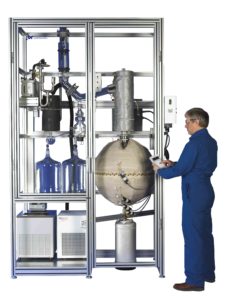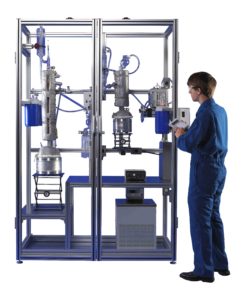Not all Crude Oil is the Same. How can you do Quality Control?
 Refineries buy large volumes of crude oil. But when a 500,000 barrel tanker arrives, how do they know they are getting what they paid for? How do they know that it hasn’t been mixed or “cut” with low value compounds to increase the volume and decrease the value?
Refineries buy large volumes of crude oil. But when a 500,000 barrel tanker arrives, how do they know they are getting what they paid for? How do they know that it hasn’t been mixed or “cut” with low value compounds to increase the volume and decrease the value?
The most basic tests are for density and sulfur content. Unscrupulous crude oil dealers have become sophisticated and can blend in low value products and still replicate the expected density and sulfur.
Distillation of crude oil samples is an important tool for checking crude oil shipments. The quantity of each distillate fraction can be checked as well as the quality of each fraction.
If a crude oil’s fraction quantity or quality are different from the expected values, it can cause upsets in the refinery. A loss of value of even 1 cent per barrel can translate into a loss of a million dollars over a years’ time.
Research Different Crude Oils and Crude Oil Blends
Crude oil distillation is used to compile a catalog of different crude oils and their fraction quantity/quality. Crude oil buyers also use modeling software and crude oil data to make smarter, more informed buying choices. Even more sophisticated modeling can be used to consider blends of crude oils. With this combined approach, you can squeeze the most value out of each barrel of crude oil.
 Crude Oil Distillation Apparatus
Crude Oil Distillation Apparatus
ASTM D2892, true boiling point distillation of crude oil distills crude oil from butane up to 370 °C vapor temperature. Fractions of naphtha, jet fuel, kerosene and other distillates are collected in this temperature range.
ASTM D5236, distillation of heavy hydrocarbons distills the residue from D2892 (370 °C) up to 565 °C. Fractions of gas oil, fuel oil, lubricant oil, and other high boiling compounds are collected.
Comments are closed, but trackbacks and pingbacks are open.